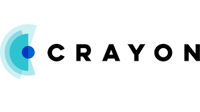Tl;dr - Competitive marketing helps industrial companies put actionable information in the hands of salespeople to win more deals. A successful program must be planned with clear strategic and tactical objectives, often incorporate technology to improve efficiency, and deliver actionable insights that salespeople appreciate and uses.
Competitive Intelligence is an Important Industrial Marketing Function
 Every company has competitors. While many are dismissive of their reputedly low quality or less renowned competitors, they often encounter them in procurement nevertheless and face questions and margin pressure as a result.
Every company has competitors. While many are dismissive of their reputedly low quality or less renowned competitors, they often encounter them in procurement nevertheless and face questions and margin pressure as a result.
Therefore, while it's important to sell capital equipment based on business outcomes rather than technical features, it's also important to understand how your competitors will sell, what they emphasize as their advantages, how they position themselves against your solutions, their pricing, and their sales playbook.
Competitive intelligence serves two main roles:
- Help you defend against competitors' sales approaches
- Target their weaknesses offensively
Most industrial marketing teams focus on tradeshows, journal ads, and perhaps some content. Competitive marketing isn't a common function in the middle market. So let's look at best practices for the kinds of information that you might collect, how technology can streamline the process, and then how you can leverage the data to improve your manufacturing marketing and industrial sales results.
Common Types of Competitive Intelligence
 Competitive marketing never crosses or even approaches the line of impropriety, much less industrial espionage.
Competitive marketing never crosses or even approaches the line of impropriety, much less industrial espionage.
Competitive intelligence professionals rely on open-source material - what's publicly available and often produced by the competitor itself. HUMINT (human intelligence) may also be used. For instance, insights from common vendors (assuming you're comfortable that they're not violating any non-disclosure agreements) can help to refine an understanding of competitors' current and planned programs
Your own sales team is also a powerful collection asset. In the activation section below we'll discuss how to deliver competitive intelligence to them in a way that's structured and helpful, but you should provide them lists of specific kinds of information that you seek, and incent them to gather and share it internally for mutual benefit.
As most of your competitors are constantly evolving intelligence collection is an ongoing activity. Competitors are always innovating their market offerings, improving their marketing, updating their messaging and value proposition, adding/removing staff, incorporating new technologies, winning/losing deals and customers, and more.
You want to understand their priorities, tactics, and strategy. Sometimes you can observe this directly, others you'll have to infer from other signals and run some analysis.
Examples of the type of collection tools you can use include:
- website
- trade association resources
- job postings
- prospect conversations
- press releases
- news stories
- SEO, content, website & traffic analysis tools
- social media listening and LinkedIn company overviews
- win/loss analysis
- vendor discussions
Examples of the information you collect will be:
- important technologies to be understood from job postings (for instance hiring a developer for smart contracts or IIoT technologies) and what that means to the product roadmap
- what content attracts most of their website traffic
- the size of marketing and sales teams
- what deals they're winning / losing
- when they're investing in marketing initiatives (e.g. website upgrade or marketing technology)
- sales expansion and reorganization
Your list will be broader.
Technology to Help Harvest and Make Competitive Intelligence Actionable
 Competitive intelligence is an ongoing stream of information. It's not a one-time snapshot. So it's important to consider technology that can help to capture and track a large volume of information.
Competitive intelligence is an ongoing stream of information. It's not a one-time snapshot. So it's important to consider technology that can help to capture and track a large volume of information.
For most middle market manufacturing companies with a modest marketing department, there's often not a lot of extra marketing bandwidth. There's normally no designated product marketing lead, and rarely a dedicated competitive marketing person. Therefore technology plays an important role in automating labor-intensive collection and cataloging tasks that wouldn't be done otherwise.
Technology like Crayon, Klue, and Kompyte are purpose-built for competitive marketing.
While it is possible to carefully curate actionable competitive intelligence using simple free tools like Google Alerts, it's very time-consuming and almost always ends up being neglected as a program stagnates when folks are overwhelmed with other priorities like impending trade shows. Technology can relieve the burden.
Often the competitive intelligence tools include templates and tools to streamline some of the activation and sales enablement. For instance, formal win/loss analysis and battlecard templates are often included.
How to Activate Competitive Intelligence
Best practices will dictate how you activate the competitive intelligence that you collect. Some will be helpful to senior management and investors to inform strategy. Some can help other departments like engineering as they consider the feasibility or priority of roadmap innovations.
Competitive intelligence contributes significantly to marketing and much of it can help sales.
The role of the competitive marketing function is to perform collection, organization, and analysis for others so that the competitive insights are provided to colleagues in useable formats.
What does that look like?
1. Information that's provided to sales should be presented in a way that doesn't contradict the sales methodology. In other words, successful sales teams today focus on business outcomes and compelling, quantified business issues. They don't sell based on features. So competitive information should provide important technical details of differentiation, but in the context of bigger conversations.
While it's helpful to catalog datasheets, it's also important to collect any publically downloadable thought leadership documents. And those data sheets should be provided in the context of battlecards that highlight big themes and tie the details to the business issues to reinforce sales best practices for the sales team.
2. Since this is a constantly evolving stream of insights, the information should be provided through a platform that's easy to navigate and search, and updated by the competitive marketing team. That ensures that everyone's always working from the most recent version - whether intranet, shared drive, document management, or other system.
3. If you sell through indirect sales channel, you'll need to decide what information is made available to channel partners and how you train around it. Channel sales managers can be a conduit for connecting the information with specific sales situations, and an LMS (learning management system) or PRM (partner relationship management platform) can solve versioning challenges.
4. Periodic briefings on trends (e.g. at a quarterly sales meeting) and brief monthly email updates (with links to deeper dives) on noteworthy events (new machine release) can keep sales informed with background impressions. Competitive marketing should also get a block of time at any sales launch or kick-off.
5. Battlecards are probably the most actionable and concrete method for delivering carefully analyzed and distilled competitive intelligence. These are designed with a consistent format for easy use. They are built around the sales methodology and reinforce best practices. And well-built battlecards organize the intelligence in a way that's easy for sales to leverage.
6. Sales playbooks, particularly knock-out plays, should incorporate important competitive intelligence information that arms salespeople with the key information in context.
7. Marketing can build demand generation and lead generation content programs to specifically target key terms and topics that drive significant traffic for target competitors.
8. Sales enablement is important. That means providing tools and content that make it easy for sales to leverage the information. Battlecards, win/loss analysis and playbooks are examples. So are content pieces developed for specific personas considering specific competitors. These products that marketing and sales operations collaboratively create, make it easy for salespeople to share impactful information in a helpful and informative way without appearing to deride competition in an unseemly way.
Other examples of helpful enablement content built on competitive intelligence include comparison articles, buyer-ready comparison matrices, case studies, and CRM accessible discussion guides with recommended questions.
The bottom line is that competitive intelligence kept in a file cabinet, rarely updated, and not distilled into actionable sales tools is of little value. Your competitive marketing plan needs to include collection, analysis, sharing, and the creation (and continuous updating) of sales enablement tools.
A Competitive Intelligence Caveat
 Obviously, every competitor can use the same methods to improve their understanding of your strategy and refine their methods for selling against you.
Obviously, every competitor can use the same methods to improve their understanding of your strategy and refine their methods for selling against you.
That's not a reason to curtail vigorous digital marketing, but it should be used as a lens to evaluate what you publicly disclose. The question isn't whether you'd like a competitor to know. Rather ask whether they likely already do, or if they'd adapt in a meaningful way if they did.
Pricing, for instance, should often be included on a website at least in general terms. But often manufacturers recoil - worried about revealing it and using the complexity and uniqueness of each sale to justify the hesitance. But you share pricing with prospects, and if the competitors' salespeople are worth their salt, they've collected info and brought it back anyway.
Similarly, any vendor that shares helpful information with you is presumably indiscreet in what they share with your competitors. Be cognizant of what you reveal and remind parties, when appropriate, of their formal and ethical non-disclosure agreements.
That highlights the potential to use competitive intelligence both defensively - to counter how competitors market and sell against you - and offensively - to optimize your marketing, sales enablement and sales playbook.
Additional Thoughts on Enhancing Competitive Intelligence with New Technologies
Integrating Scientific Knowledge and Advanced Methods for Machinery Manufacturers
To excel at competitive intelligence for machinery manufacturers and capital equipment companies without significant "busy work", it becomes crucial to incorporate scientific knowledge and new technologies. These elements are not just additive; they represent a new way to survey and monitor the competitive landscape, transforming how companies engage in industrial marketing and sales.
Leveraging Computer Science and Artificial Intelligence
In the age of digital transformation, technology increasingly means computer science and artificial intelligence (AI). The integration of AI into competitive intelligence provides a robust framework for analyzing vast amounts of data. This includes understanding market trends, competitor strategies, and customer preferences. AI algorithms can sift through social media platforms, analyze SEO trends, and even predict future market shifts, addressing privacy concerns while harnessing valuable insights.
Mass Production and Customization: Balancing the Scale
The concept of mass production, traditionally associated with efficiency and uniformity, is undergoing a transformation. Today, it's about balancing efficiency with customization. This is a challenge in the collection of competitive intelligence as well. By leveraging the latest in AI and machine learning, manufacturers can observe areas of competitor focus and use that to help predict market needs, adjust production lines, and respond to unique customer requirements swiftly.
Security Measures in the Digital Age
As competitive intelligence increasingly relies on digital platforms, security measures become paramount. The protection of sensitive data, especially when dealing with insights derived from competitors, is critical. Advanced cybersecurity protocols ensure that the information gathered is not only accurate but also secure from potential breaches. Your competitive research, and the way you interpret and react to it, are important confidential items of company information to be carefully protected.
The Role of Social Media Platforms
Social media platforms have emerged as treasure troves of competitive intelligence. By monitoring these platforms, companies gain real-time insights into consumer behavior, competitor moves, and market trends. However, navigating these platforms requires a balance, respecting privacy concerns while extracting valuable data. Simple listening tools are a powerful place to start, providing insights into who's engaging with competitors and vice versa, and the topics of the engagement.
Addressing Privacy Concerns in Intelligence Gathering
Privacy concerns are at the forefront of competitive intelligence. While gathering information, it's essential to adhere to ethical guidelines and respect data privacy laws. This approach not only ensures legal compliance but also builds trust with customers and partners.
Recommended Resources for Continuous Learning
In this ever-evolving field, staying updated is crucial. Recommended resources include industry journals, online courses in AI and data analytics, and webinars focused on the latest trends in industrial marketing and competitive intelligence. These resources provide practical ends, empowering professionals to stay ahead in their field.
Practical Ends: From Theory to Action
The transition from theoretical knowledge to practical ends is a journey that every competitive intelligence professional must undertake. This means applying the learned concepts in real-world scenarios, continuously testing and refining strategies to fit the dynamic market landscape.
Embracing New Technologies for the First Time
For many companies, embracing new technologies such as AI and advanced data analytics can be daunting, especially if it's their first time. However, the leap can be transformative, offering insights and efficiencies that traditional methods can't match. It's about taking that first step towards integrating scientific knowledge into everyday business practices.
Competitive Intelligence Built on Technology and Consistent Effort
As machinery builders gradually add competitive intelligence to their manufacturing marketing toolkit, the inclusion of scientific knowledge, new technologies, and a systemic approach to data analysis stand out as key drivers of success. From leveraging AI and computer science to understanding the nuances of mass production and security measures, each element plays a crucial role in shaping a robust competitive strategy. By addressing these aspects, machinery manufacturers can not only stay ahead of the competition but also pave the way for innovation and growth in an increasingly digital world.


